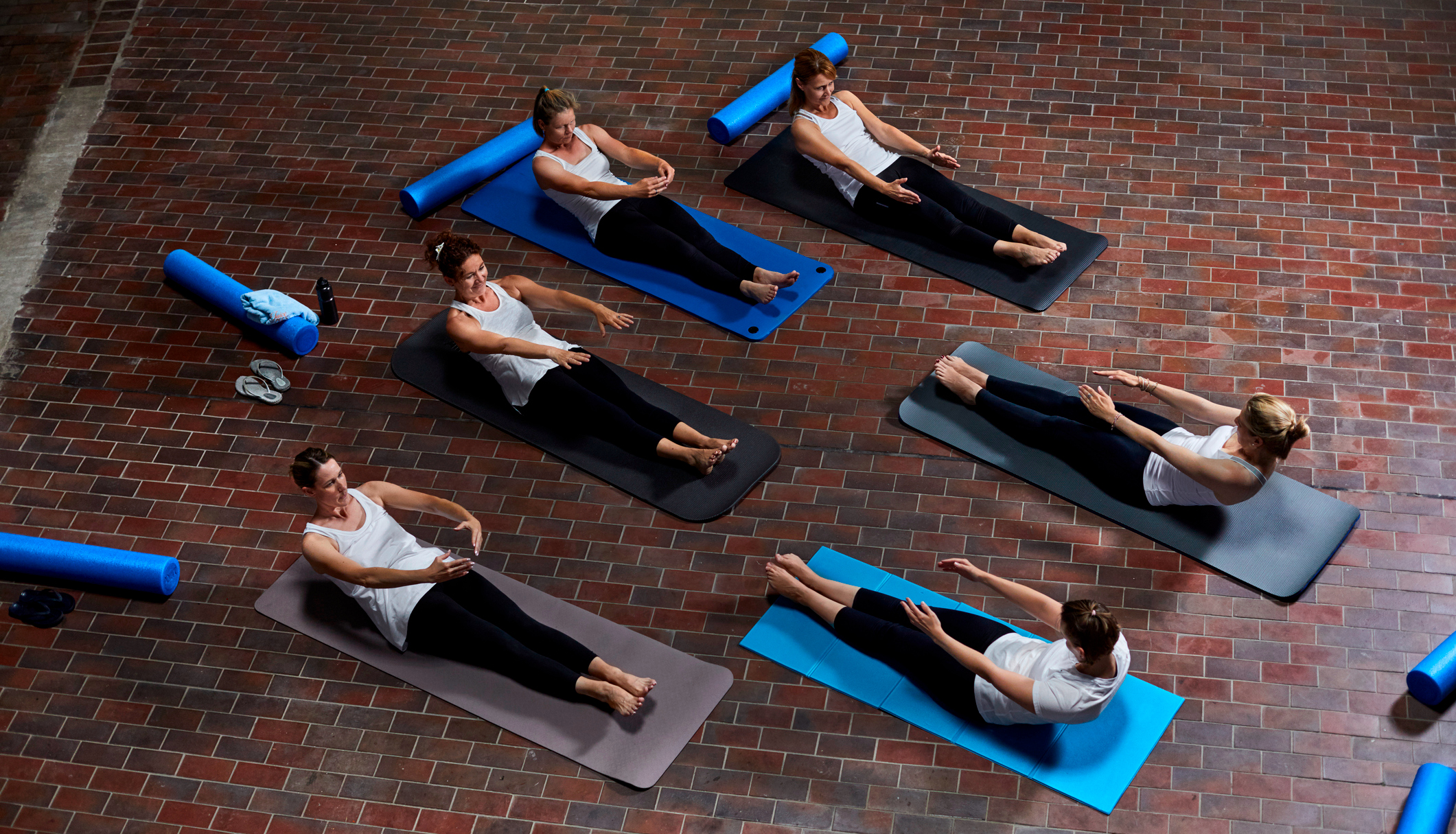Forget Crunches, This Exercise Is A Better Way To Build A Strong Core
The roll-up is your secret weapon to improving core strength

If you find doing endless crunches particularly torturous, you’ll be pleased to hear there are alternative exercises that will build core strength without being nearly as unpleasant. Meet the Pilates roll-up. It may not be as well-known as the crunch, but the roll-up is arguably even better at building strength in your core.
In the roll-up, you gradually move from lying on your back to sitting with your spine curved forward and your arms reaching forward. It’s performed slowly and with control, meaning there’s no momentum and you can’t help your abs by pulling on your head or neck.
Although it’s hard work, I find the mindful movement can make it feel almost meditative, as you focus on peeling your spine off the mat.
The slow and steady pace required in this exercise means your core muscles spend more time under tension. Studies such as this one published in the Journal of Physiology suggest that the more a muscle is loaded with tension to the point of fatigue the greater the protein synthesis, which can lead to muscle growth.
“The roll-up is one of my favorite exercises to do and to teach,” says Pilates instructor Millie Shiers, who teaches mat and reformer classes at Core LDN. “Practicing the roll-up can improve the flexibility of your spine and increase your abdominal strength. The roll-up also teaches your body how to control spinal articulation.”
How To Do The Pilates Roll-Up
Lie on your back with your legs extended and together, and feet flexed (toes pointing up to the ceiling). Extend your arms up with your palms facing your feet. As you exhale, lift your head and chest, slowly peeling your spine off the mat and reaching your arms forward. As you do so, slowly peel your spine off the mat. Once you’re reaching as far forward as you can, take an inhale to pause, then exhale and use your abs to gently roll down again, articulating your spine back onto the mat.
“Focus on squeezing your legs together and sliding your ribs towards your hips as you roll up,” says Shiers.
Sign up for workout ideas, training advice, reviews of the latest gear and more.
Roll-Up Modifications
If the full roll-up is too intense, there are plenty of ways to make it easier as you develop the strength to do the whole movement. “You can modify the roll-up with props to make it more accessible,” says Shiers. “One way to do this is to wrap a band around your feet and hold either end of the band—the band acts as an extra abdominal muscle. Another prop you can use is ankle weights to give you a bit more support in anchoring your lower body to the mat.”
“I also like to teach modified versions of the roll-up without props,” says Shiers. “For example, I will get clients to practice both halves of the roll-up separately—the forward flexion and then rolling down—until they can smoothly lift their body with no momentum.”
To fully master the roll-up, there are clever cues to help you do it as effectively as possible. “In Pilates, we love to make exercises as challenging as they can be by ensuring you properly connect to your muscles,” says Shiers. “To really feel the roll-up, think of pushing your heels away from you and drawing your ribs back in the opposite direction. This opposition will help you connect to your abs.”

Camilla Artault is a writer and keen runner. She has covered women’s running gear – testing leggings, jackets, running bras, tops and shorts – for Coach since 2018, as well as interviewing experts and writing about a range of health and lifestyle topics.

